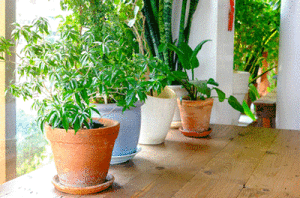Improve Your Indoor Air Quality With Houseplants
Not many people realize the amount of formaldehyde and other carcinogenic pollutants that can build up indoors. Common household items like furniture and cleaning chemicals release these substances into the air you breathe every day. To reduce these pollutants and improve indoor air quality, add some of the following houseplants.
Reducing Formaldehyde and/or Benzene
Formaldehyde is present in some carpet dyes, wood products, tobacco products and glues. Benzene is present in items such as solvents, furniture polish, fuels and tobacco products. These and similar pollutants can also enter the home through outdoor air, especially if you live in an urban area. The following houseplants act as natural air purification systems for removing formaldehyde or benzene.
- Spider plants – These are excellent for reducing levels of formaldehyde. They also filter out some benzene and xylene, a solvent used in some paint thinners, adhesives and lacquers.
- English Ivy – is another champion for reducing formaldehyde.
- Wax Begonia – absorbs benzene and toluene. Toluene is used in some solvents.
- Boston fern – is an enemy of formaldehyde.
- Chinese evergreen – reduces levels of benzene and formaldehyde.
- Aloe Vera – assists in removing formaldehyde.
- Ficus – removes formaldehyde, benzene and trichloroethylene. The latter is a solvent used it products such as paint removers.
- Snake Plant – helps reduce levels of benzene and formaldehyde.
- Peace Lily – This blooming plant helps remove benzene and acetone. Just take care if you have pets because this lily is poisonous.
- Golden Pothos – reduces benzene and formaldehyde.
- Dracaena – filters common chemicals found in many household varnishes and sealants, such as formaldehyde, xylene, and trichloroethylene. The downside is these houseplants are poisonous to pets.
Controlling Ammonia
Ammonia is used in many cleaners and fertilizers. Reduce this indoor toxin by adding these plants:
- Lady Palm – reduces levels on ammonia in the home.
- Weeping Fig – reduces ammonia, toluene and xylene
- Mums – Both the garden mum and the florist’s mum can reduce levels of ammonia, benzene, formaldehyde, and xylene.
For more about improving air quality with houseplants, please contact us at NisAir Air Conditioning and Heating.

